Our resident beatsmith gets back to (drum and) bassics with this raw, sparse drum & bass workout.
Beat Dissected is a regular series that deconstructs drum patterns, showing you how to recreate them in any DAW. Just copy the grids in your own software to recreate the loop.
Here’s the full beat we’ll be making this week:
Audio Player
Spec
Tempo
168-178bpm
Swing
50-60%
Sounds
raw live kit sounds, machine kick, plus dirty break/s
Step 1
Open with this simple kick line. The choice of sound is important. We’ve gone for a 909-style sample with plenty of thump, punchy in the lows but not over the top. To create mix space for the bassline, the kick passes through a high-pass filter set at around 85Hz. Some of the mids and highs have been increased to help it cut through a busy mix (and the break that will be overlaid in step 5).
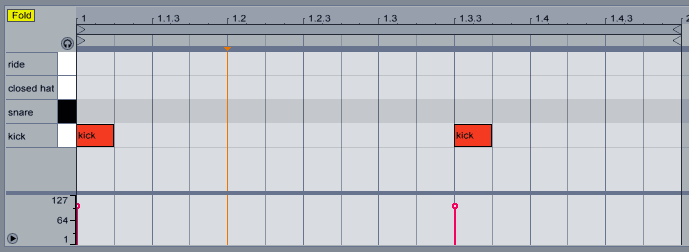
Step 2
With the snare in, the classic breaks-derived drum & bass rhythm is already evident. The snare is made up of three elements – a low punch, the fundamental pitch of which is boosted to make it hit harder, a rough live hit for fullness in the mids, and a characterful top snare with an uber-fast attack transient that’s high passed then fed through subtle hall reverb to give the snare a washy ambience.
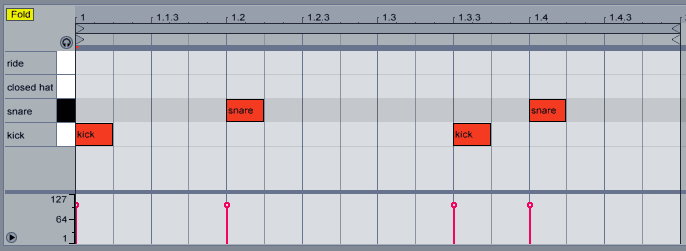
Step 3
The groove is filled out now with the hi-hats. You don’t need anything too characterful here: just a nice clacky sound, machine or live-kit sourced, that brings definition to the high-end (and to the kick and snare). Where the kick and snare sounds are often picked to be larger that life, the hi-hat should take a clear (and clean) back-seat: hold off on any distortion, overdrive or saturation. Some judicious EQ and reverb help it slot neatly back in the mix. The 16th-measure ghost notes at the end of the beat are swung back slightly and play at a lower volume to give the beat a little swing.
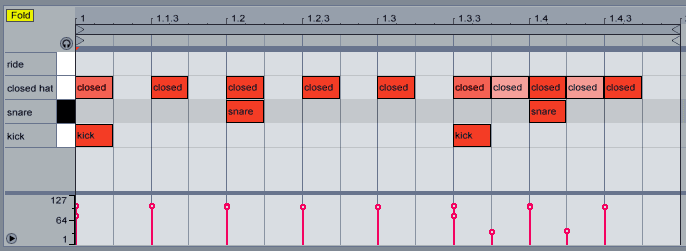
Step 4
The live-style on-the-eighth ride is tuned to sit with the rest of the beat, and then a bitcrusher effect is used to change its harmonics. You may also want to EQ out lower frequencies and add a feed to the same reverb on the snare. Last in line comes a compressor, side-chain driven from the kick and snare, to ensure that the ride is knocked back in the mix when either a kick or snare hits. This adds a breathy feel to the beat, and ensures the two key elements always knock through clearly.
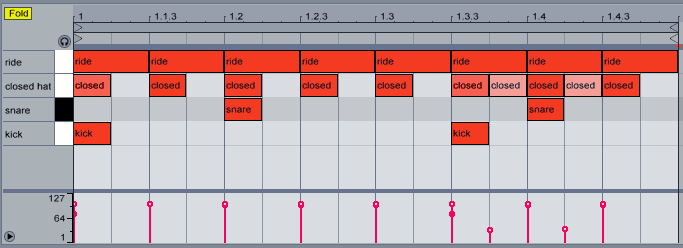
Step 5
Now for the break! The drums programmed in steps 1-4 are grouped and run through a saturator effect to blend them and dirty them up a little. A range of raw breakbeat loops are then auditioned until one that works with the sounds and groove established so far is found. At this stage it’s character that matters. When a break with the same sonic feel is found then cutting can begin: slicing and re-programming in any number of ways to create a new original drum & bass groove. The coup de grace is a slinky downward roll at the end of the 8-bar measure.

Audio Player
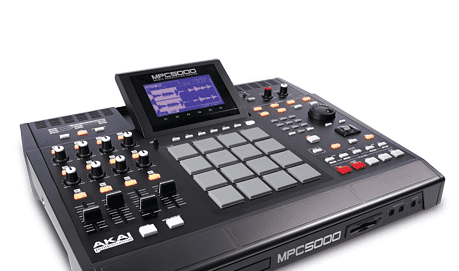
02.17 PM
I can’t get the beat right on step 1 and 2 :/ – How is it done? (I’m really a rookie)
02.23 PM
Hey Erik
The grid shows a single bar split into 16 steps (usually called 16th notes). Whichever software you’re working in:
– set the tempo to around 170bpm
– load up the step sequencer/drum machine
– put a kick drum on the 1st and 11th steps of the bar
– put a snare on the 5th and 13th steps of the bar
That should get you started. Good luck!
05.39 PM
@erik lol
01.13 PM
@ap LOL
08.11 AM
@lol wut?
10.28 AM
i would love a east coast hip hop one of these but i guess it would be covered in all of these series diff elements still would be nice 4 one tho!!